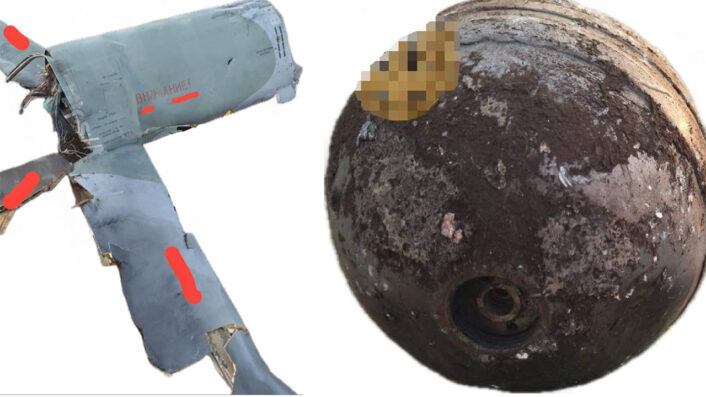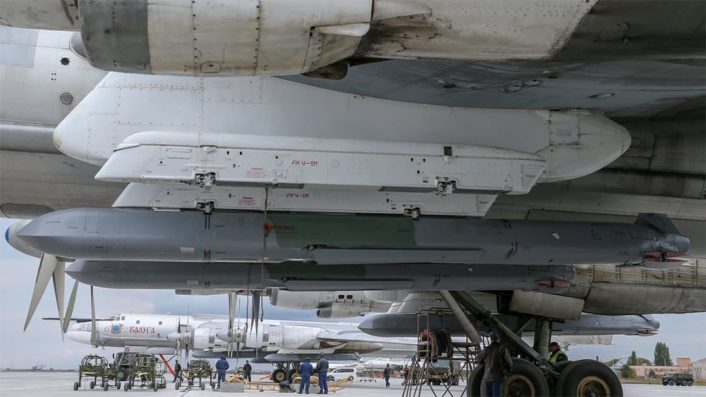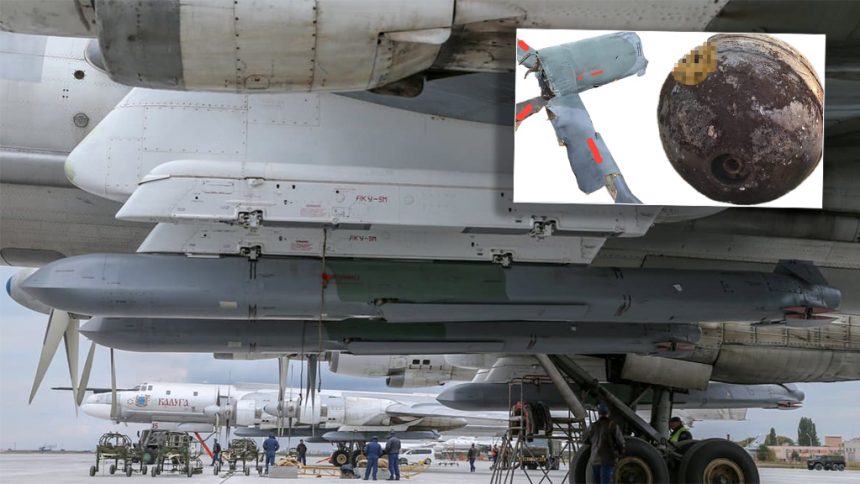Pictures and media reports from Ukraine claim the Kh-101 is now carrying a cluster warhead, in its dual-warhead variant.
Russia has reportedly introduced another modification to the Kh-101 ALCM (X-101 Air-Launched Cruise Missile), after variants releasing decoys to divert SAM (Surface-to-Air Missiles) and dual/tandem warheads.
Pictures and media reports claim the Kh-101 is now carrying a cluster warhead, in its dual-warhead variant. Russia fired a volley of these missiles on the night of Jun. 7, 2024 at Ukrainian targets.

Defense Express Ukraine, which said the missile may also be the Kh-555, said Russia fired “five” of these missiles from its Tu-95 missiles, according to data from its AD units. All five were “shot down,” along with “48 units” of its 53 Shahed attack drones (Geran/Geranium-2) kamikaze UAVs.
The submunition-releasing cluster warhead was discovered while it was heading towards “critical infrastructure.” Russian Milbloggers have said this version will come in handy in attacking Ukrainian air bases and admitted that they lacked this capability earlier in the war.
The image carried by the Ukrainian reports and posts on X show what appears to be a fold-out wing section and darker spherical shaped charge that is believed to be the cluster munition – or at least a part of it. The Kh-101 is fired from Russia’s Tu-95 and Tu-160 strategic bombers deep into Ukraine’s rear battlefield targets like air bases, power generation infrastructure in its cities as far as the west.
Cluster Warheads Eliminate Need for Accuracy
These long-range standoff fires and drone attacks are also employed by releasing Iskander and Iskander-M tactical in coordination to confuse and bait Ukrainian air defenses. The missile and drone releases take place from nearly across the frontline in unpredictable patterns of timing and routes.
Like the Ukrainian ATACMS (Army Tactical Missile System) strike on the Belbek air base in Crimea on May 15 and the hit on an S-400 battery at Mospyne in Donetsk on May 22-23 where it used M39 or the M39A1 ATACMS variants to destroy soft-bodied targets like aircraft or AD (Air Defense) systems.
While the M39 carries 950 submunitions, the M39A1 holds 300 bomblets.These eliminate the need to have precise hits. At Belbek for instance, Russia was claimed to have lost one MiG-31, three Su-27s and two S-300 or S-400 systems.
Mainstay Russian Air-Launched Cruise Missile
Kh-101 is a strategic cruise missile that is designed with LO (Low Observable features). It uses a combined inertial guidance system with an electro-optical system kicking in at the terminal stage. Observers have noted this operates on the DSMAC (Digital Scene-Mapping Area Correlator) principle like in the British-French Storm Shadow/SCALP-EG. Its range estimates vary from 2,500 to 5,000-km and the missile can change directions mid-flight.
The Tu-95 can carry eight such missiles in pairs of two on four external hardpoints while the Tu-160 carries 12 of them in an internal compartment on a rotating launcher. The missile can be pre-programmed with the target coordinates prior to launch. Assuming it is the Kh-101 missile and the claim about the cluster warhead is true, it is likely the Russians might have to compromise on range to accommodate it.

“However, the launch distance and the territory of Ukraine, the range reduction is not critical,” said Militarnyi. Ukrainian Telegram channel ‘war_home’ inferred that the Kh-101 now possibly has four variants. One with a single lens optics; another with a three-lens optical seeker, an on-board EW station and “‘dipole’ firing system”; and the third and fourth ones with a “double cartridge warhead.”
Possibly, the dual (tandem) warhead has two other sub-variants where after the first warhead, the other is possibly a penetrating warhead or a cluster warhead. This is however not yet clear.
More photos of this Russian Kh-101 missile with two warheads, courtesy of Defense Express.https://t.co/O7OAOhvhdQhttps://t.co/aSGX4N1VWL pic.twitter.com/jm4HXJ77Dn
— John Hardie (@JohnH105) May 9, 2024
Russian Milbloggers Admit Cluster Warheads Were Needed
Interestingly, Russian Telegram channel ‘Milinfolive’, “(noted) that the absence of cluster warheads in Russian long-range cruise missiles.” These include the “Kh-101 or Caliber (Kalibr)” that “had an extremely negative impact on the effectiveness of missile attacks on enemy air bases even in the first weeks of hostilities.”
This was when “Ukrainian aviation was in the most vulnerable position and the Ukrainian Armed Forces’ air defense system could not shoot down even some of the missiles.” Thus, in order to hit targets at airfields deep in Ukrainian territory, Russia had to launch “a missile at each individual aircraft.”
Such a volume of strikes was “simply unattainable,” leading to any particular Ukrainian air base being targeted “with only a few missiles…which did not lead to tangible results.” ‘Military Informant’ later validated The Aviationist’s previous analysis on Ukrainian ATACMS strikes.
“The effectiveness of missiles with cluster warheads when striking airfields and air defense positions can be assessed by the arrivals of American MGM-140 ATACMS.” The appearance of “long-range cruise missiles with cluster warheads” with “Russian strategic aviation…can significantly expand the list of effectively hit targets, enemy aircraft…and air defense batteries deep in Ukrainian territory.









